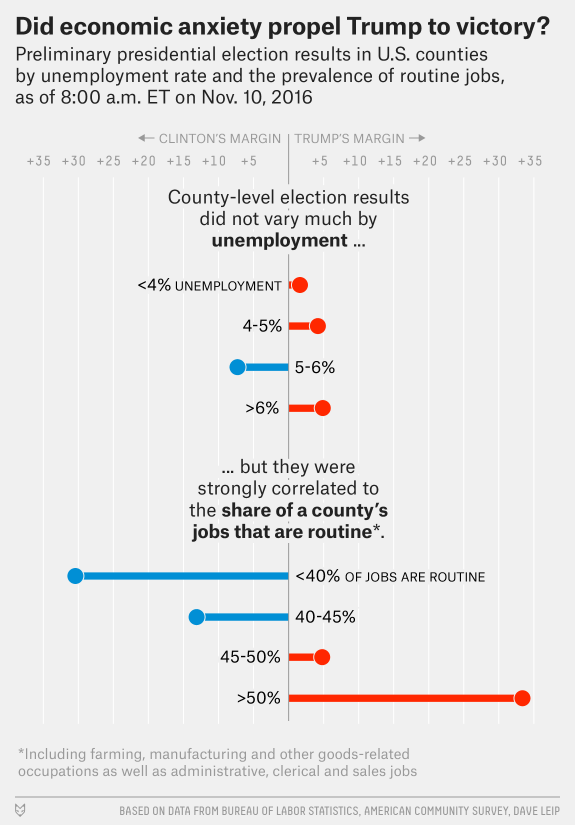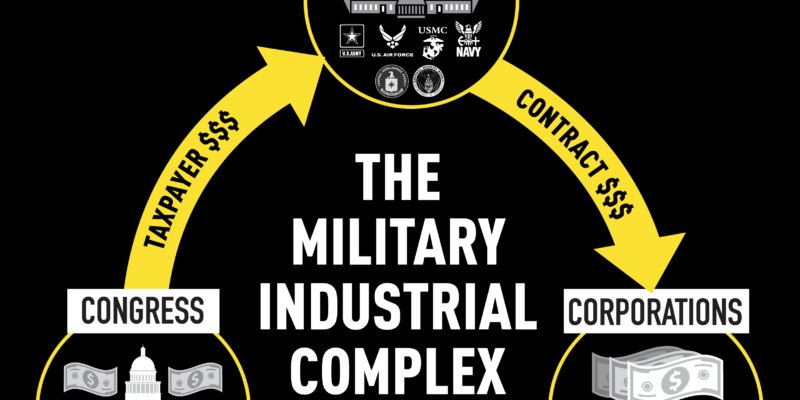
Post-Election Data Download: Dominant Narratives: Economic Anxiety vs. Racism
This post is the first in a series that will examine the election and attempt to answer questions we have been asking internally and fielding from friends, colleagues, and allies. We expect this series to take us into the holiday season; please don’t hesitate to contact us with additional questions or input.
This week, we will look at a few of the narratives that have dominated post-election analysis, beginning with an examination of the “Trump phenomenon” in two opposing ways.
Economic Anxiety vs. Racism
This election was really about economic anxiety
Much has been made of the “white working class” voters in depressed areas of the country, and the Rust Belt in particular, turning to Trump for a new economic lease on life.
Many people do not believe—or do not want to believe—that the majority of Trump voters are actually as racist, xenophobic, misogynist, anti-Semitic, Islamophobic, or otherwise bigoted as the candidate’s rhetoric suggests.
Given that economic outlook is consistently one of the most important factors in vote choice, coupled with the fact that much of Trump’s support came from economically depressed areas, a strong alternative explanation is “economic anxiety.” But is it true that Trump supporters were worried about their own (or their families’ or communities’) financial future?
Well before Election Day, there was a raging debate amongst the “liberal intelligentsia” (to use James Kwak’s term) about this economic anxiety vs. racism question. Many, like Dylan Matthews at Vox, argued that “there is absolutely no evidence that Trump’s supporters, either in the primary or in the general election, are disproportionately poor or working class.” (This would imply that racism is the likely explanation for Trump support.)
The evidence Matthews cites, however, does not support this assertion—as Kwak points out:
“The general problem with arguments of the form Trump-supporters-are-actually-rich is this: compared to what? If you want to answer the question of how well Trump is doing with working-class voters, you need a baseline. You can’t expect him to poll evenly with Clinton among any group of poor people: as Matthews acknowledges, ‘Lower-income whites are always likelier to support Democrats than other whites.’ So saying that Trump supporters are richer than Clinton supporters, or that some group of poor people favors Clinton, doesn’t prove much. And as we’ve seen, Trump voters are not rich compared to other Republican primary voters.”
It is also important not to conflate the terms “poor” and “working class,” although there is much justifiable debate about where to properly draw these lines. The voters who swung to Trump, particularly in the key states, were “working class” or “middle class,” not “poor.” These are current or former union families and others, whose incomes have stagnated, whose standard of living has declined, and who perceive their prior political party, the Democrats, as increasingly disinterested in their fate.
If economic anxiety is the reason many Trump voters supported him, we would expect to see that these voters live in predominantly working and lower-middle class areas; or that they live in places where jobs have been lost and the economic future is uncertain; or both. And we do see this. Jed Kolko of FiveThirtyEight summarized the trend as “Trump Was Stronger Where The Economy Is Weaker” and that’s in line with many other analyses. Kolko argues that, while unemployment rates don’t correlate with Trump vote share, “economic anxiety is about the future, not just the present. Trump beat Clinton in counties where more jobs are at risk because of technology or globalization. Specifically, counties with the most ‘routine’ jobs…were far more likely to vote for Trump.”
Moreover, “to understand what drove Trump’s victory, we can look at how Trump’s margin against Clinton in 2016 compared with Romney’s against President Obama in 2012.
Sure enough, the swing toward Trump was much stronger in counties with a higher share of routine jobs; the swing toward Trump was also stronger where unemployment was higher, job growth was slower and earnings were lower.”
We would also expect to see that Trump voters’ attitudes are more pessimistic than average when it comes to the financial future. And we do see that: according to the Edison national exit poll, amongst those who say their financial situation compared to four years ago is “worse today,” 78% voted for Trump, and only 19% voted for Clinton. Similarly, amongst those who say life for the next generation will be “worse than today,” 63% voted for Trump and 31% for Clinton. These findings are also supported by pre-election polls on similar attitudes.
Finally, it’s important to recall what we know about how voters make their voting decisions generally. Per the Brookings Institution’s Elisabeth Jacobs, “While the self-identified white working class may be somewhat more culturally conservative than their peers, it is simply not true that social policy preferences drive vote choice over and above economic policy preferences. For all white voters, economic policy preferences are stronger predictors of presidential vote choice than social policy preferences. This finding holds even after controlling for whether or not a respondent lives in the South,” where white working class voters have been moving toward the Republican Party throughout the post-Civil Rights Era/Second Reconstruction. “In sum, while white working class voters may be marginally more culturally conservative than their peers, their economic preferences gain priority in the voting booth.”
This election was really about racism and xenophobia
But what about all that disgusting rhetoric—and policy proposals—from Trump and his surrogates about “building the wall,” about banning refugees, about registering Muslims, about sexually assaulting women? What about the endorsements from the KKK and white nationalists? Are we supposed to believe that Trump voters supported a racist candidate but aren’t racist themselves?
We already know that the overwhelming majority of Trump’s support came from white voters, and that voters of color pretty much rejected him.
However, it’s not the case that Black voters turned out in overwhelming numbers to vote against Trump; nor are we seeing strong evidence that Hispanic voters did so (we will cover both these groups in a later post). Nor does the Exit Poll indicate that women were overwhelmingly turned off by Trump’s misogyny: women went for Clinton with a 12-point margin, which is on par with Obama in 2008 and lower than Clinton in 1996. This is a reasonable indication that a lot of voters who were the targets of Trump’s racist and sexist rhetoric and who were presumably motivated to vote against him, may not have been sufficiently motivated to turn out against him, or perhaps not sufficiently motivated to vote for Hillary Clinton. In any case, that’s not the same thing as white voters supporting him because of his racist rhetoric.
If racism (etc.) explained the vote, we would expect to see that Trump voters hold racist views and support discriminatory policies. And we do see this in polling from both before and after Election Day. For example, the Kaiser Family Foundation and CNN conducted a poll on white working class voters in September and found that, among those considering a vote for Trump, views of immigrants were more negative than non-Trump voters: 82% said Muslim immigrants increase the risk of terrorist attacks, 62% said Latin-American immigrants take jobs away from Americans, 60% said Latin-American immigrants add to the crime problem, 34% said they or their families had been negative affected by illegal immigrants, and about half said the increasing diversity of the US is threatening American culture.
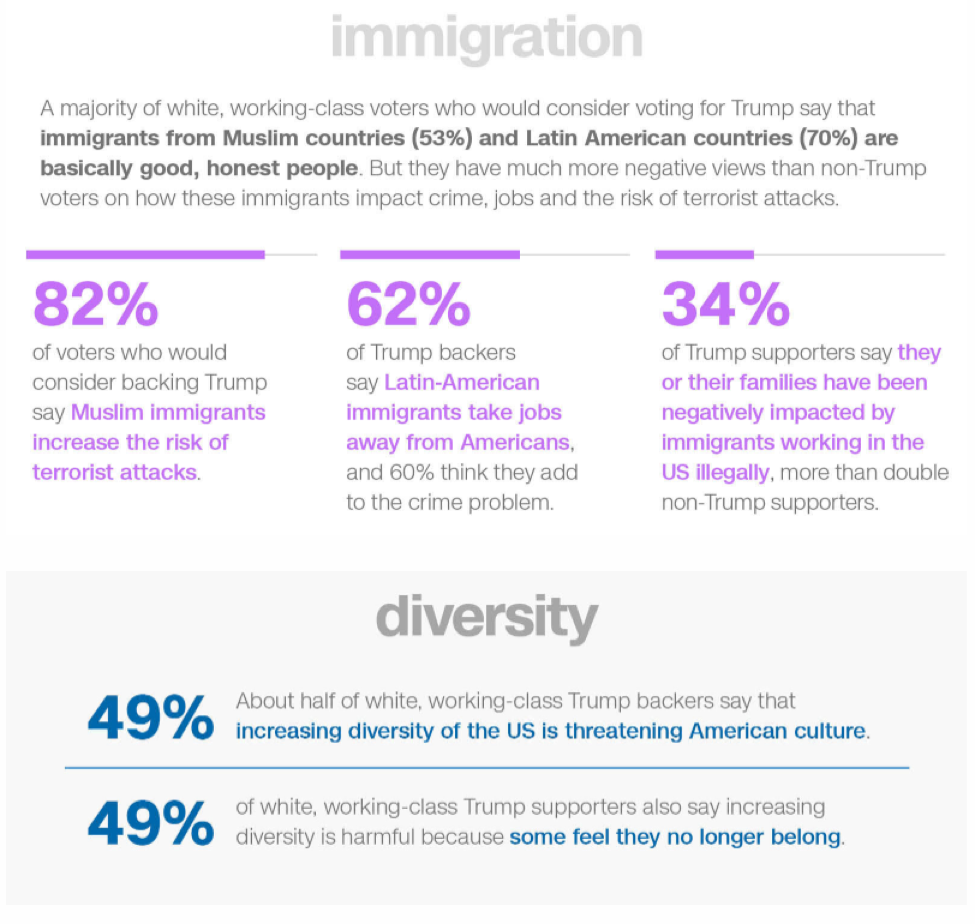
Perhaps even more damning, the Economist/YouGov poll from early August found that people who had voted for Trump in the Republican primary were much more likely than others Americans to agree with each of the following statements:
- “Irish, Italian, Jewish and many other minorities overcame prejudice and worked their way up. Blacks should do the same without any special favors.” (87% agreed, versus 57% of the whole sample)
- “It’s really a matter of some people not trying hard enough if blacks would only try harder they could be just as well off as whites.” (78% agreed, versus 43% of the whole sample)
T.R. Ramachandran argues that white working class voters (WWC) from Southern states have been moving toward the Republican party for decades, principally beginning with Richard Nixon’s “Southern Strategy,” which aimed to explicitly exploit racist sentiment and which has continued through the intervening decades.
Media Matters also found that voters were overwhelmingly receiving information about Clinton’s emails, not about her policy positions. Gallup similarly found that “email” dominated what Americans had heard or read about Clinton by September, while the words “immigration” and “Mexico” were significantly more prominent than anything about Trump’s economic positions.
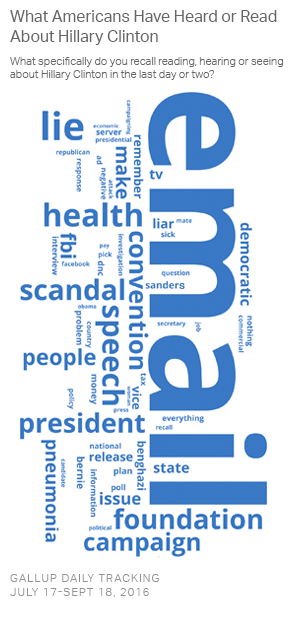
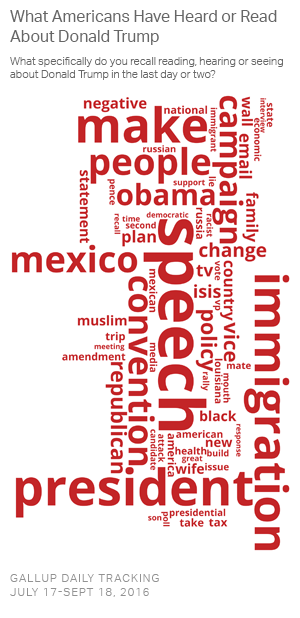
Economic policy positions were not what voters were associating with, nor hearing about, the candidates. This implies that vote choice was made on another set of factors altogether—the obvious one being racial anxiety.
What our own data told us
It’s worth pointing out that plenty of Clinton supporters also hold racist, xenophobic, and Islamophobic views. In ReThink’s qualitative research on public opinion of Muslims and anti-Muslim bigotry this summer, many self-identified liberals and moderates expressed prejudiced views of Muslims and Islam. These were often fueled by misconceptions or downright incorrect information.
Further, our quantitative research showed that those identified as liberal or moderate (a rights advocate’s “base” and “persuadable” audiences) were more likely to agree that “our most important concern must be people’s safety, even if that means Muslims immigrating to this country must undergo additional scrutiny” than to disagree—the latter audience agreed by a 58-point margin.
A third of the “base” and two-thirds of the “persuadable” samples agreed that “even though most Muslims in America are not terrorists, the fact is that most terrorist attacks in America are committed by Muslims.”
These findings align with the Economist/YouGov poll mentioned above: 38% of Democrats agreed that “Irish, Italian, Jewish, and many other minorities overcame prejudice and worked their way up. Blacks should do the same without any special favors.”
In the same survey, a quarter of Democrats also agreed that “It’s really a matter of some people not trying hard enough; if blacks would only try harder they could be just as well off as whites.” Despite a large minority of the Democratic party holding prejudiced views, Democrats overwhelmingly voted for Clinton—only 8% said they voted for Trump in the Exit Poll.
So which is it?
It’s difficult to ascribe a single motivation to half of the electorate—or to an entire election. Nevertheless, the reverberations of this election will be felt for many years to come, so it’s a worthwhile exercise to grapple with this question.
Paul Gronke, professor of Political Science at Reed College and Director of the Early Voting Information Center, argues that “voters decide based on a wide variety of things—partisanship most importantly, then issues (mostly the economy), and then finally candidate characteristics. It has never been the case that candidate characteristics are the most important consideration. And it is often the case that attitudes about particular ‘single issues’ can overwhelm everything else.” This is one reason the economic anxiety argument seems more likely to people who study elections. James Carville’s admonition is as true now as it was in 1992: “it’s the economy, stupid.”
In addition, Gronke tells his students, “While the things Trump said may matter a lot to you, you can’t expect that those same things matter to other people, who may believe in very different things and have very different life experiences. We won’t be able to answer this question in detail for a few months, but I suspect we are going to find not that many Trump voters did not completely ignore the things he said, but they heavily discounted them because of other concerns.” When it comes to racism, xenophobia, etc., this kind of rhetoric matters much more to voters who are directly affected by those sentiments—voters of color, voters with family and friends from other countries, voters who identify as feminists—than to those who are not on the receiving end—voters who are white, whose families have been in the US for many generations, voters whose lives are insulated from ethnic diversity.
In the end, it probably shouldn’t be a zero-sum question at all—that is, it’s not necessarily a question of racism or economic anxiety.
Racism undoubtedly played a part in this election, but, as James Kwak argues, “it doesn’t answer the question of why racism is so popular. Racism isn’t a virus that falls out of the sky. It’s the product of historical contexts. [Maybe today’s heightened racism came from the Great Recession, but] saying ‘It’s racism!’ doesn’t preclude the role of economic factors in making that racism attractive.” The two explanatory variables interact with one another. In Gronke’s words: “race and ethnicity in particular get bound up with fear and discontent. That, unfortunately, is very common in the human condition.”
Ramachandran also posits that the anti-Clinton vote may have been driven by sexism, not racism.
Why it matters
Beyond the basic-human-decency question of whether Trump supporters are racist or not, understanding whether Trump voters were primarily motivated by racial or economic anxiety has important implications for advocacy work over the next four years.
Clearly, even if white supremacy wasn’t the motivating factor for many voters, large groups of white voters were also not bothered enough by the racist, sexist, anti-Semitic, Islamophobic, and xenophobic overtones of the campaign to allow that to supersede their economic priorities. The implication is that advocates for the equal rights and safety of Muslim, Arab, and South Asian communities, for example, will need to navigate a harsh landscape in which overt racism is tolerated.
There is some hopeful news for minority rights advocates. First, a majority of American voters rejected the racism being spewed by the Republican presidential campaign. ReThink’s research this summer tested many such statements from a variety of sources, all anonymized, and found that respondents overwhelmingly rejected the statements as racist or prejudiced rhetoric. Second, there is strong evidence that economic concerns did outweigh other concerns for some Trump voters—these are a persuadable audience, although the “persuasion” may need to begin at a more elementary point than we previously thought. Third, advocates may be able to use economic anxiety as a lever for persuading a Middle American audience that these other issues matter: messages that frame the United States as (economically) stronger together, as more innovative when looking beyond differences, are positive and aspirational.
Have any opinions about how to address racially vs. economically motivated voters? How will that affect how you, as nonprofit communicators, do your work? Tweet to us @rethink_media and let us know.
